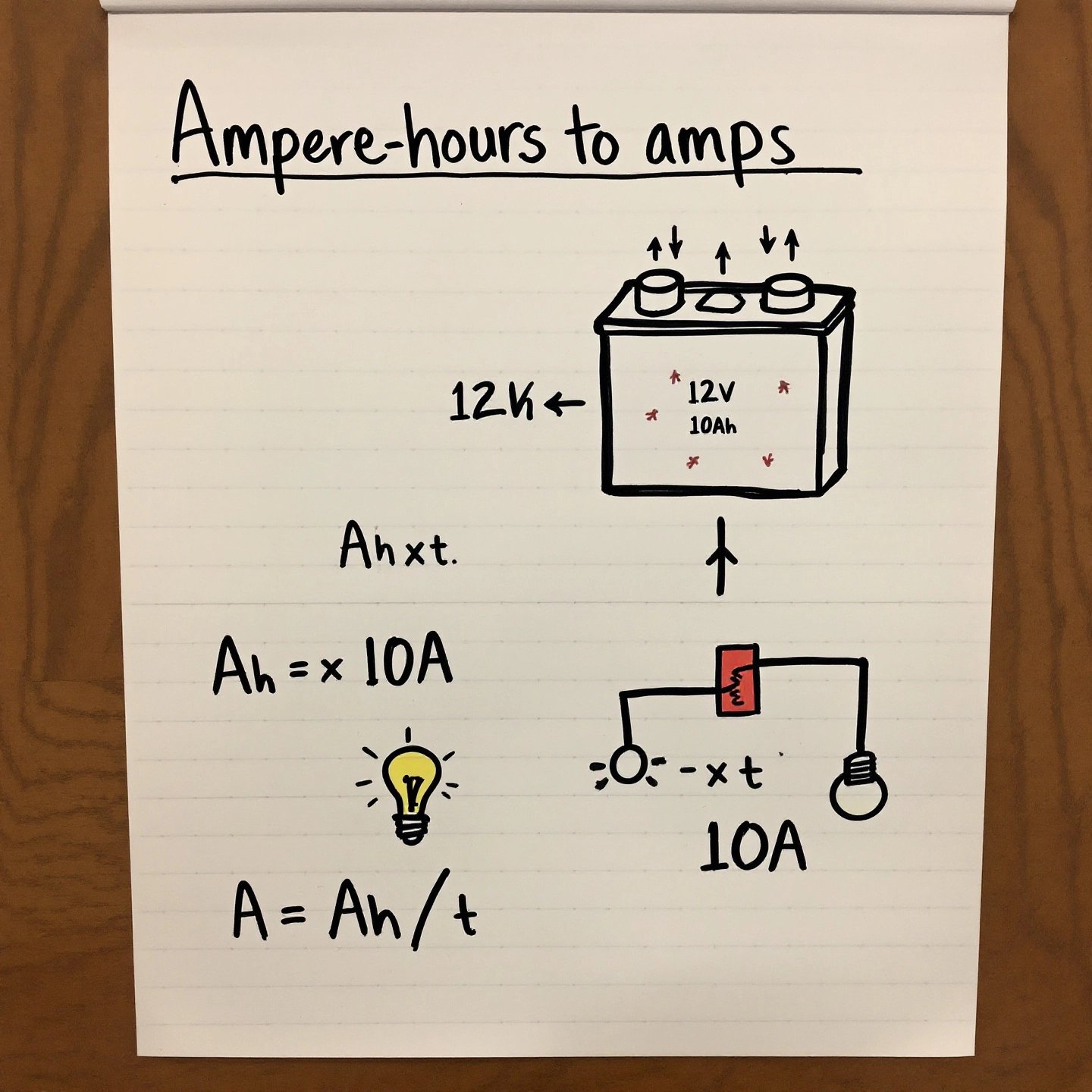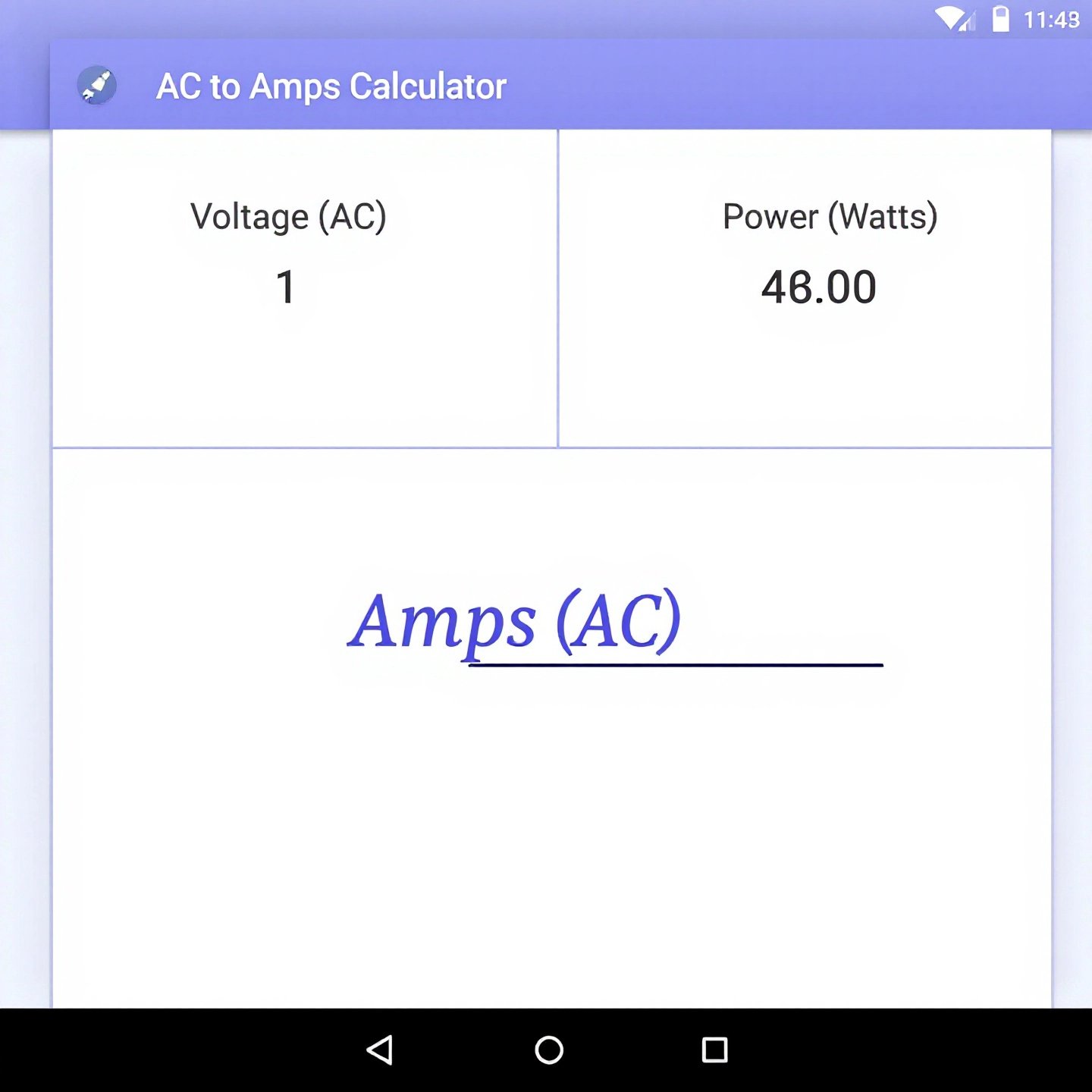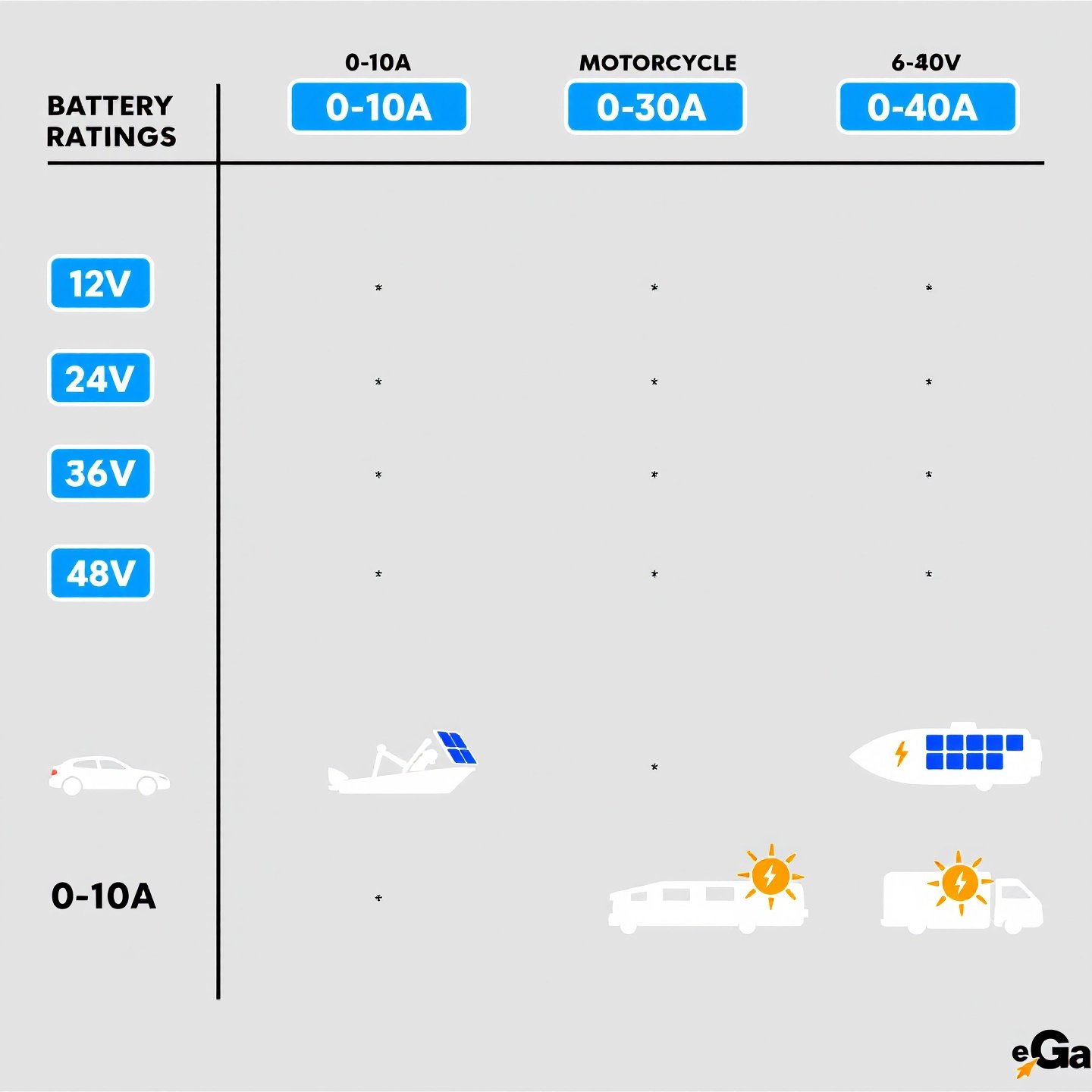Introduction to ah to amps
Have you ever wondered how to maximize the efficiency of your battery systems? Whether you’re managing solar power installations or automotive batteries, understanding the conversion from ampere-hours (AH) to amps is crucial. This conversion is not just a mathematical exercise; it is a key to optimizing battery usage and enhancing the performance of your electrical systems.
Ampere-hours, or AH, is a unit that measures the capacity of a battery, essentially telling you how much current a battery can supply over a specific period. But why is converting AH to amps important? Imagine you are running a solar power system. Knowing how long your battery can sustain a certain current flow is vital for planning energy usage and ensuring that your system runs smoothly throughout the day and night.
For instance, if you have a solar system with a 100Ah battery, understanding the conversion allows you to calculate how long the system can power your appliances. This conversion is particularly beneficial in remote areas where solar systems are often the primary source of electricity. By converting AH to amps, you can better manage your energy resources, ensuring that your battery meets the current demands of your devices without overloading or underutilizing your power supply.
Ultimately, mastering the conversion from AH to amps can significantly enhance the efficiency of your battery systems, leading to improved performance and longevity. As you delve deeper into this topic, you’ll discover how this knowledge can transform your approach to energy management and device operation. Let’s explore the underlying principles and practical applications of this essential conversion.
Understanding the Basics of Ampere Hour Ratings
When it comes to understanding battery performance, the term ‘ampere-hour’ (AH) is pivotal. But what exactly does it mean? Essentially, an ampere-hour is a unit of electric charge, representing the amount of current a battery can supply over the span of one hour. For instance, a battery rated at 10 AH can provide 10 amps for one hour, or 1 amp for 10 hours, depending on the demand. This metric is crucial for gauging how long a battery will last under specific conditions, making it an essential consideration in applications ranging from small electronics to large-scale energy systems.
Now, let’s delve into the difference between converting ‘ah to amps’ and ‘amps to ah.’ These conversions are fundamental for effectively managing power usage. When you convert AH to amps, you determine how much current can be drawn from a battery over a given period. For example, if you have a 5 AH battery and you need it to run a device that requires 1 amp, the battery can sustain this load for 5 hours.
Examples to Illustrate AH and Amp Conversions
Consider this: converting ‘1 ah to amps’ involves understanding the discharge rate. If your device operates at 0.5 amps, a 1 AH battery will power it for 2 hours. Conversely, converting ‘1 amp to ah’ involves identifying how much capacity (in AH) is needed to sustain a 1 amp draw over a specific time. For instance, to run a device at 1 amp for 3 hours, you would require a 3 AH battery.
Understanding these conversions empowers you to make informed decisions about battery selection and management, ensuring your systems are both efficient and reliable. By grasping the basics of ampere-hour ratings and their conversions, you can optimize energy usage across various applications, from automotive to renewable energy systems.

Essential Math for Accurate Conversions
Converting ampere-hours (AH) to amps might sound daunting, but with the right approach, it becomes a straightforward task. This conversion is pivotal for anyone dealing with battery systems, as it helps optimize performance and prolongs battery life. So, how do you convert AH to amps? Let’s break it down into simple steps.
Understanding the Conversion Formula
The foundation of converting AH to amps lies in a simple formula: Amps (A) = Amp Hours (Ah) / Hours (h). This equation allows you to determine the current (in amps) that can be drawn from a battery over a specified period. For instance, if you have a battery rated at 10 AH and you plan to use it over 5 hours, the calculation would be:
- Amps (A) = 10 Ah / 5 h = 2 A
This means the battery can supply 2 amps continuously over 5 hours. Understanding this basic formula is crucial for effective energy management, especially in applications like solar power systems where precise power calculations are essential.
Step-by-Step Conversion Process
To convert AH to amps accurately, follow these steps:
- Identify the Battery’s AH Rating: Check the battery label or specifications to find the ampere-hour rating.
- Determine the Usage Time: Decide over how many hours you want to distribute the battery’s power.
- Apply the Formula: Use the formula Amps (A) = Amp Hours (Ah) / Hours (h) to calculate the current.
- Convert Time Units if Necessary: Ensure the time is in hours. Convert minutes or seconds to hours by dividing by 60 or 3600, respectively.
Imagine you have a 20 AH battery and you need to power a device for 4 hours. Using the formula, you get:
- Amps (A) = 20 Ah / 4 h = 5 A
This calculation tells you that the battery can provide a steady 5 amps over the 4-hour period.
Practical Applications and Considerations
Understanding how to convert AH to amps is not just an academic exercise—it has practical implications. For example, in solar power systems, knowing the current output helps in designing efficient energy storage and distribution setups. It ensures that batteries are neither overworked nor underutilized, thereby enhancing their lifespan and reliability.
Moreover, this conversion is crucial in automotive applications where battery capacity and discharge rates directly affect performance. By mastering these calculations, you can optimize battery usage, ensuring that your systems operate at peak efficiency without unnecessary strain.
In conclusion, converting AH to amps is a vital skill for anyone working with battery systems. By understanding and applying the basic formula, you can make informed decisions that enhance the efficiency and longevity of your energy solutions. As you continue to explore battery management, remember that these calculations are the key to unlocking optimal performance.
Manual Methods for Calculating AH and Amps
In an age where digital tools are at our fingertips, you might wonder why manual calculation techniques for converting AH to amps are still relevant. Imagine you’re in an off-grid location, relying on solar power, and your digital devices are unavailable. Sounds complex? Not really. Understanding manual conversion methods is essential for such scenarios, ensuring you can manage your battery systems effectively without electronic aids.
Basic Manual Conversion Techniques
At the heart of converting ampere-hours (AH) to amps manually is a simple arithmetic operation. You’ll need to know two key pieces of information: the battery’s ampere-hour rating and the time over which you want to use the battery. The formula remains consistent: Amps (A) = Amp Hours (Ah) / Hours (h). This straightforward equation allows you to calculate the current that a battery can supply over a specific period.
For example, if you have a 12 AH battery and you plan to distribute its power over 6 hours, the calculation would be:
- Amps (A) = 12 Ah / 6 h = 2 A
This means the battery can provide a continuous current of 2 amps over the 6-hour period.
Sample Calculation for Off-Grid Scenarios
Let’s say you are using a solar-powered system in a remote area, and you need to power a small appliance that requires 3 amps. You have a 15 AH battery. To determine how long the battery will last, you rearrange the formula to solve for time:
- Hours (h) = Amp Hours (Ah) / Amps (A)
- Hours (h) = 15 Ah / 3 A = 5 hours
This calculation tells you that the battery can support the appliance for 5 hours, allowing you to plan your energy usage accordingly.
Benefits of Manual Calculations
Why bother with manual calculations? First, they empower you to understand the fundamental relationships between battery capacity and current demand. This knowledge is invaluable in off-grid scenarios, where quick mental math can help you make crucial decisions about energy allocation. Moreover, manual methods foster a deeper understanding of your battery systems, enabling more strategic energy management and troubleshooting when digital tools are unavailable.
In conclusion, while digital tools provide convenience, mastering manual calculations for converting AH to amps equips you with the skills to handle energy management challenges effectively, especially in remote or off-grid locations. By understanding these techniques, you can ensure your systems run smoothly, maximizing efficiency and reliability.

Leveraging Online Calculators for Quick Results
In today’s digital age, converting ampere-hours to amps has never been easier, thanks to the availability of online calculators. These tools are designed to simplify the conversion process, making it accessible even for those who may not have a technical background. But how do these calculators work, and what are their pros and cons?
Understanding Online Calculators
Online ‘ah to amps calculators’ are user-friendly platforms that require minimal input to deliver precise results. You simply enter the battery’s ampere-hour rating and the desired usage time, and the calculator does the rest, providing an instant conversion to amps. This convenience is especially beneficial for those who need quick answers without delving into manual calculations.
Pros of Using Online Calculators
- Accessibility: These calculators are readily available online, often free of charge.
- Ease of Use: With intuitive interfaces, they cater to users of all skill levels.
- Time Efficiency: Instant results save time, allowing for quick decision-making.
- Accuracy: They minimize human error, ensuring reliable conversions.
Cons of Relying on Online Calculators
- Dependence on Internet: They require an internet connection, which may not be available in remote areas.
- Limited Customization: Some calculators may not account for specific battery characteristics or environmental factors.
- Data Privacy: Entering data online could pose privacy concerns for sensitive information.
Despite these drawbacks, online calculators remain a valuable tool for quick and accurate conversions. For those seeking to deepen their understanding of battery management, resources like Renewable Energy Nexus offer comprehensive insights and guidance on optimizing battery usage. Their platform not only provides educational content but also offers a range of solar panel products to enhance sustainable energy solutions. By leveraging these resources, you can make informed decisions about your energy systems, ensuring efficiency and reliability.
Whether you’re a seasoned technician or a curious beginner, online calculators and platforms like Renewable Energy Nexus can significantly enhance your approach to energy management. As you continue to explore the intricacies of battery conversions, remember that these tools are there to support and simplify your journey, enabling you to achieve peak power performance.
Choosing Effective Converter Tools and Apps
When it comes to converting ampere-hours to amps, having the right tools at your disposal can make all the difference. With a variety of ‘ah to amps converter’ apps and devices available, selecting the most effective one is crucial for ensuring accuracy and ease of use. But how do you choose the best tool for your needs? Let’s explore some key considerations and features to look for in converter tools.
Key Features of Reliable Converter Tools
- User-Friendly Interface: A good converter tool should be easy to navigate, even for those with minimal technical expertise. Look for apps with clear instructions and intuitive designs.
- Accuracy: Precision is vital in conversions. Ensure the tool you choose is known for delivering accurate results, as this will directly impact your energy management decisions.
- Compatibility: The tool should be compatible with various devices and operating systems, allowing you to use it on your preferred platform, whether it’s a smartphone, tablet, or computer.
- Offline Accessibility: Consider tools that offer offline capabilities, enabling you to perform conversions even in remote areas without internet access.
- Customization Options: Advanced tools may offer options to input specific battery characteristics or environmental conditions, providing more tailored results.
Top Converter Apps and Devices
Among the plethora of options, some stand out for their functionality and reliability. For instance, the Watts Amps Volts Calculator is highly rated for its ability to handle single and three-phase electrical calculations, making it a versatile choice for both novices and professionals. Its straightforward interface and robust performance have earned it positive reviews from users who appreciate its speed and accuracy.
Another noteworthy mention is the A2Z Converter, which supports a wide range of conversions and offers cloud-based processing to save local resources. This tool is particularly praised for its ease of use and comprehensive functionality, making it a go-to for many users seeking quick and reliable conversions.
Making the Right Choice
When selecting an ‘ah to amps converter,’ prioritize tools that align with your specific needs. Whether you require a simple app for occasional use or a more sophisticated device for complex calculations, the right tool can enhance your efficiency and confidence in managing battery systems. Remember, the best converter is one that combines accuracy, ease of use, and adaptability to your unique requirements.
By investing in a reliable converter tool, you empower yourself to make informed decisions about energy management, ultimately optimizing the performance and longevity of your battery systems. As you continue your exploration of battery conversions, these tools will serve as invaluable allies in achieving peak power efficiency.

Exploring Battery Ratings for Real World Scenarios
When it comes to practical applications like powering vehicles or solar systems, understanding battery ratings such as ‘100 ah to amps’ is crucial. These ratings inform you about the battery’s capacity and how it can be utilized effectively in different scenarios. But how do you interpret these ratings to ensure optimal performance?
Battery ratings, such as ampere-hours (AH), provide a snapshot of how long a battery can deliver a specific current. For instance, a 100 AH battery theoretically supplies 100 amps for one hour, or 10 amps for 10 hours. However, the actual performance can vary based on factors like discharge rates and environmental conditions.
Interpreting Battery Ratings in Vehicles
In automotive applications, understanding ‘100 ah to amps’ conversions helps determine how long your vehicle’s systems can run without recharging. Imagine you’re using a car battery rated at 100 AH to power a device that requires 20 amps. Using the formula Amps (A) = Amp Hours (Ah) / Hours (h), you find:
- Hours (h) = 100 Ah / 20 A = 5 hours
This means the battery can power the device for approximately 5 hours, assuming ideal conditions. Such calculations are vital for ensuring your vehicle’s battery can handle the load of additional accessories without compromising its primary functions.
Applications in Solar Systems
For solar power systems, battery ratings are equally important. Knowing how to convert ‘100 ah to amps’ allows for better planning of energy storage and distribution. For example, if you have a solar setup with a 100 AH battery and need to power a 5-amp appliance, the calculation is straightforward:
- Hours (h) = 100 Ah / 5 A = 20 hours
This indicates the battery can sustain the appliance for 20 hours, provided there are no losses or inefficiencies in the system. Such insights are invaluable for maintaining continuous power supply in off-grid solar installations.
Table: Battery Ratings and Amp Output
| Battery Rating (AH) | Discharge Rate (Amps) | Duration (Hours) |
|---|---|---|
| 100 AH | 10 A | 10 hours |
| 100 AH | 20 A | 5 hours |
| 100 AH | 50 A | 2 hours |
As demonstrated, understanding battery ratings like ‘100 ah to amps’ is essential for both automotive and solar applications. By accurately interpreting these ratings, you can make informed decisions about energy management, ensuring efficiency and reliability in your systems.
For those looking to further enhance their solar energy solutions, platforms like Renewable Energy Nexus offer a wide range of solar panels and resources to help you achieve peak performance. Whether you’re powering a small device or an entire home, understanding your battery ratings is the first step towards sustainable and efficient energy use.
Cranking Amps and Their Impact on Performance
When it comes to understanding battery performance, differentiating between standard ampere-hour (AH) ratings and cranking amps is crucial, especially in automotive applications. But what exactly are cranking amps, and how do they differ from AH ratings? Let’s delve into these concepts to clarify their significance and impact.
Understanding Cranking Amps and Cold Cranking Amps (CCA)
Cranking amps, and more specifically, Cold Cranking Amps (CCA), measure a battery’s ability to start an engine in cold temperatures. The CCA rating indicates how many amps a 12-volt battery can deliver for 30 seconds at 0°F (-18°C) while maintaining a voltage of at least 7.2 volts per cell. This measurement is vital for assessing a battery’s starting power, particularly in cold climates where engines are harder to start. Higher CCA ratings mean more starting power, which is essential for vehicles operating in colder environments.
In contrast, AH ratings measure a battery’s capacity to deliver a steady current over time. While AH is about endurance, CCA is about immediate power delivery. For example, a battery with a high CCA rating is ideal for starting engines quickly, while a high AH rating is better for applications requiring prolonged power supply, like running electronics or lighting.
Impact of Ambient Temperature on Battery Performance
Temperature plays a significant role in battery performance. Cold temperatures can reduce a battery’s capacity and its ability to deliver cranking amps. As temperatures drop, the chemical reactions within the battery slow down, reducing its efficiency. This is why CCA ratings are crucial for vehicles in colder climates—they ensure that even in low temperatures, the battery can start the engine effectively.
Conversely, in warmer climates, the need for high CCA ratings decreases. However, high temperatures can increase the rate of chemical reactions, potentially leading to faster battery degradation. Therefore, understanding the balance between AH and CCA ratings is essential for selecting the right battery for your specific environmental conditions.
In summary, while AH and CCA ratings serve different purposes, both are critical for optimal battery performance. By understanding these ratings and how they are affected by temperature, you can make informed decisions about battery selection and maintenance, ensuring your systems are reliable and efficient in any climate.

Best Practices for Common Battery Capacities
When it comes to utilizing common battery capacities like a ‘100 ah battery’ or a ’60 ah battery,’ understanding best practices is key to maximizing their lifespan and performance. These batteries are widely used in various applications, from automotive to solar energy systems, and knowing how to care for them can save you time and money in the long run.
Optimizing Battery Performance
To get the most out of your 100 ah or 60 ah battery, it’s essential to follow specific guidelines. First, always ensure that your batteries are stored and operated within their recommended temperature range. Extreme temperatures can significantly impact battery life. For instance, high temperatures can accelerate chemical reactions within the battery, leading to faster degradation, while low temperatures can reduce the battery’s capacity and efficiency.
Regular maintenance is also crucial. This includes checking the battery terminals for corrosion, ensuring that connections are tight, and cleaning any dirt or grime from the battery casing. For lead-acid batteries, maintaining proper water levels is vital. Use only distilled water to refill the cells, as minerals in tap water can cause damage.
Safety Precautions and Maintenance Tips
Safety is paramount when handling batteries. Always wear protective gear, such as gloves and goggles, to prevent exposure to harmful substances like sulfuric acid. Additionally, ensure that batteries are stored in a well-ventilated area to avoid the buildup of gases that could lead to explosions.
Implementing a regular inspection routine can help identify potential issues before they become serious problems. This includes monitoring the battery’s voltage and charge levels. Using a multimeter can be beneficial for checking these parameters, ensuring that the battery is operating within its optimal range.
For those using a 100 ah battery in solar applications, it’s important to consider the depth of discharge (DoD). Keeping the DoD at an optimal level—typically around 50%—can extend the battery’s life. Similarly, for a 60 ah battery used in automotive applications, ensuring that the battery is not frequently discharged below 20% can prevent premature wear.
In conclusion, by adhering to these best practices and safety tips, you can enhance the performance and longevity of your 100 ah and 60 ah batteries. Regular maintenance, proper storage, and safe handling are the cornerstones of effective battery management, ensuring that your energy systems remain reliable and efficient.
Conclusion
As we wrap up our exploration of converting ampere-hours (AH) to amps, it’s clear that mastering this conversion is crucial for optimizing battery performance and efficiency. Whether you’re powering a vehicle, a solar energy system, or any other application, understanding these conversions can significantly enhance your energy management capabilities.
Accurate AH-to-amp conversions allow you to predict how long a battery can sustain a given load, ensuring you make informed decisions about energy usage. This knowledge is particularly vital in scenarios where precise power calculations are necessary for maintaining system reliability and efficiency. By applying the mathematical formulas and leveraging reliable tools, you can ensure that your batteries are neither overworked nor underutilized, thus extending their lifespan and improving overall performance.
Moreover, platforms like Renewable Energy Nexus offer valuable resources and products that can further enhance your energy solutions. Their range of solar panels and expert insights can guide you in selecting the right components for your systems, ensuring that you achieve peak power performance while embracing sustainable practices.
In conclusion, the journey from AH to amps is more than just a mathematical exercise—it’s a gateway to smarter energy management and sustainable living. By integrating this knowledge with the right tools and resources, you can optimize your battery systems for maximum efficiency and reliability, paving the way for a brighter, cleaner energy future.
FAQs about AH to Amps Conversion
1. How do you convert AH to amps?
To convert AH to amps, divide the ampere-hour rating by the number of hours the battery is used. For example, a 10 AH battery used over 5 hours provides 2 amps.
2. Why is converting AH to amps important?
Converting AH to amps helps manage battery usage efficiently, ensuring devices receive the right current without overloading or underutilizing the power supply.
3. What is the difference between ampere-hours and cranking amps?
Ampere-hours measure a battery’s capacity over time, while cranking amps indicate the battery’s ability to start an engine, especially in cold conditions.
4. How does temperature affect AH and CCA ratings?
Cold temperatures reduce a battery’s capacity and CCA, while high temperatures can accelerate degradation. Proper storage and usage conditions are crucial for performance.
5. What tools can help with AH to amps conversion?
Online calculators and converter apps offer quick and accurate AH to amps conversions, but manual calculations are essential in off-grid scenarios.



